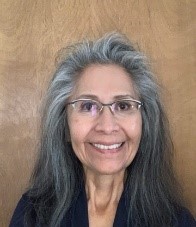It is encouraging that thousands of American Indian and Alaska Native people are not using commercial tobacco products and are not exposed to secondhand smoke or aerosols. A tobacco-free lifestyle reaps many benefits for the individual, family, and community. We respect that many tribal communities use tobacco for ceremonies, prayers, and medicinal purposes. Consequently, throughout this blog, we refer to “commercial” tobacco products.
November marks Lung Cancer Awareness Month. Lung cancer is the leading cause of cancer death among American Indian and Alaska Native men and women, and commercial tobacco is a known risk factor for lung cancer, heart disease, and diabetes. Exposure to secondhand smoke also puts non-smokers at risk. If you know of or are a commercial tobacco user, this may be the time to quit to protect your health and family.
While cigarette smoking has been steadily declining among the general U.S. adults to 13.7%, Native adults continue to experience a high prevalence of smoking at 22.6%. An estimated 55.65% of Native adults want to quit smoking.
Many may find quitting tobacco challenging, while others can stop cold turkey. The nicotine in tobacco is an addictive substance that makes it very difficult for people who want to quit. Many tobacco users would like to quit and may have tried several times. Some are successful in quitting, while others return to smoking. Studies indicate that using nicotine replacement therapy cessation aids such as nicotine gum, nicotine patch or nasal spray, nicotine inhaler, and nicotine lozenges can increase a person’s smoking cessation success, especially with counseling support.
The Community Preventive Services Task Force recommends mobile phone text messaging interventions for tobacco cessation to help adults quit. It is important to promote and provide cessation services to smokers who are ready to quit. If local cessation services is not available, please refer to the IHS SmokefreeTXT messaging program for American Indians and Alaska Natives. A smoker can access this service by texting “NATIVE” to 47848. This program provides encouragement, advice, and tips to help quit smoking. Another resource is referral to 1-800-QUIT-NOW (1-800-784-8669).
When you quit smoking, the health benefits begin almost immediately.
- 20 minutes after quitting: Your heart rate and blood pressure drop.
- 12 hours after quitting: The carbon monoxide level in your blood drops to normal.
- 2 weeks to 3 months after quitting: Your circulation improves and lung function increases.
- 1 to 9 months after quitting: Coughing and shortness of breath decrease.
- 1 year after quitting: Your increased risk of coronary heart disease is half that of a smoker's.
- 5 to 15 years after quitting: Your stroke risk reduces to that of a nonsmoker.
- 10 years after quitting: The lung cancer death rate is about half that of a continuing smoker's. The risk of cancer of the mouth, throat, esophagus, bladder, cervix, and pancreas decrease.
- 15 years after quitting: Your risk of coronary heart disease is the same of that of a non-smoker.
We must work together to prevent a new generation of commercial tobacco users. One of the strategies is to tap into our community assets by engaging youth and supporting youth as allies to advance and improve community health. The Sacred Circle of Tobacco engages youth and their adult mentors to learn about the history of traditional tobacco use and to develop leadership, decision-making and advocacy skills to promote health through cultural values and teachings.
Below are resources to support commercial tobacco-free lifestyle:
- Print and display a Keeping Tobacco Sacred poster in a clinic or community setting
- Refer tobacco users to cessation services or the IHS SmokefreeTXT messaging program
- Screen for and document tobacco use of patients in the electronic health record
- Access the Sacred Circle of Tobacco to engage youth to take led roles to increase tobacco awareness
- Request for basic tobacco intervention skills certification training by contacting Area Health Promotion/Disease Prevention Coordinators
- Access Be Vape Free posters
- View archived tobacco prevention webinars



